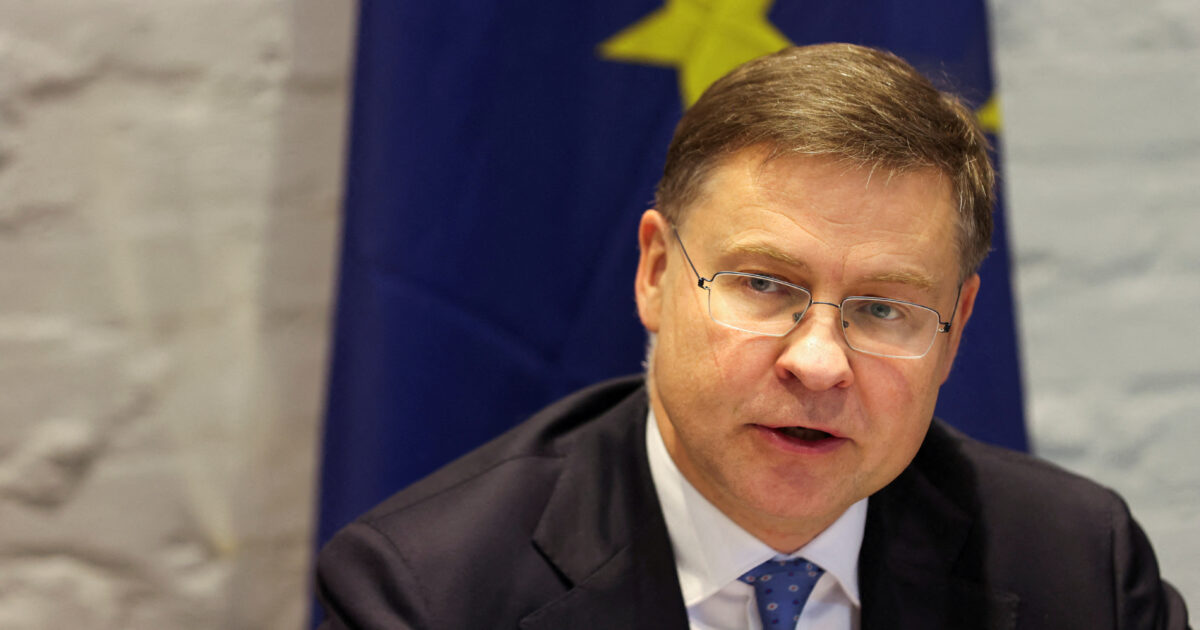‘The spring forecasts emphasize the need to receive the EU Quick and decisive measures to enhance competitiveness and ensure long -term prosperity, “said Economics Commissioner Valdis Dobrovskis in today’s (19.5.2025) presentation of spring economic forecasts.
In his speech he referred to the five basic messages contained in EU financial forecasts by making special reference to US dutiesbut also to defensive investment.
In his first message, he said there was “secret global uncertainty”. In his second message he stressed that the EU economy remains durable despite the difficult conditions it is facing, so moderate growth and acceleration is expected this year.
“EU GDP is expected to rise by 1.1% in 2025 and by 1.5% in 2026. Thus, the eurozone economy is expected to grow by 0.9% this year and 1.4% next year.” In his third message, he talked about the labor market that “remains sturdy, while more jobs are created and real wages are increasing”.
“Inflation is decreasing faster than expected due to lower energy prices,” while “the prospects are still leaning down, especially because of commercial tensions,” the last two messages extracted from financial forecasts were for him.
Impact on US duties
These developments “burden global economic activity and trade, which is why spring forecasts” have revised worldwide growth and trade. Global development outside the EU is now projected to reach 3.2% in both 2025 and 2026. This represents a downward revision by 0.4 percentage points from the prediction of autumn. The revisions down world imports were much more important, ”he said.
“Commercial tensions between the US and the EU and the US and China could squeeze the GDP growth and rekindle inflationary pressures upwards.” At the same time, “further, the escalation of EU – US trade tensions or the faster expansion of EU trade, including through new free trade agreements, could help support EU growth,” he said.
According to forecasts, “trade remains high in the first quarter of 2025, probably due to advance markets in view of duties”, with forecasts estimating that trade is expected to be less important driving force for global development.
“The highest US duties and commercial uncertainty await EU exports”, while imports are also reviewed down in 2025. “Net exports are almost 0.5% from growth, a burden that weakens in 2026. It is a significant change over our autumn.”
Simulation
“It is impossible to separate the impact of duties, increased uncertainty and stricter financial conditions on growth and inflation prospects,” the Commissioner said, adding that “a simulation exercise allows us to investigate the impact of different shocks.”
Speaking about the simulation of the impact of US duties announced by April 2, he said that “almost Catholic duties would cause a remarkable shrinkage of world trade and economic activity. By the end of 2026, world GDP would be 0.4% below the basic level and global trade would be reduced by 2.9%, according to the textbook theory. The result shows that everyone would lose such measures. “
Defensive costs
“Increased defense spending could also contribute positively to growth as a secondary benefit to the primary goal of enhancing EU -US security,” Dobrovskis said.
In the special study conducted by the Commission, “it examines the potential economic impact of the highest defense spending on the EU based on information available on the deadline (30/4)”. The provision reflects “the increase in EU defense spending from 1.4% of GDP in 2024 to 1.6% in 2025 and 2026.
“The activation of the national escape clause would allow Member States to increase defense spending by up to 1.5 percentage percentage of GDP per year between 2025 and 2028. By the deadline of the forecasts, the majority of Member States had already decided to request the activation of the national. Estonia, Greece, Latvia, Lithuania, Hungary, Poland, Portugal, Slovenia, Slovakia and Finland. “
